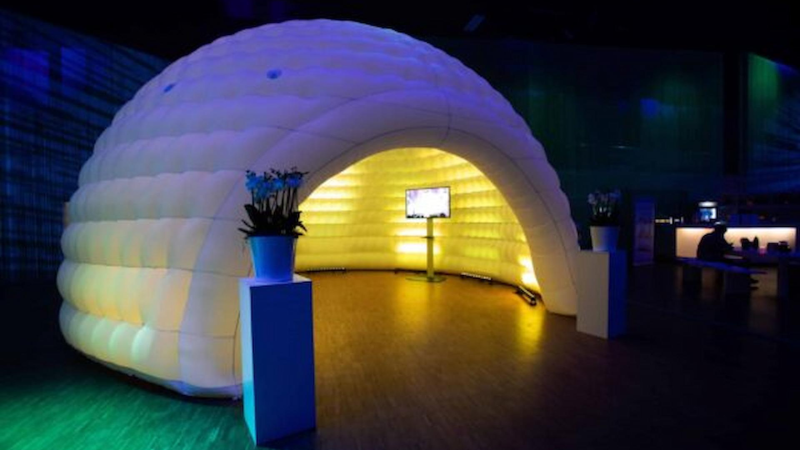“Dispelling Myths: Can Getting Hit From the Back Make Your Butt Bigger?”

In the realm of fitness and body enhancement, various myths and misconceptions often circulate, captivating the curious minds of individuals striving for physical improvement. One such myth that has gained attention is the notion that getting hit from the back can contribute to a larger and more defined buttocks. In this article, we delve into the science behind this claim, separating fact from fiction and exploring the true factors that influence buttocks size and shape.
Table of Contents
ToggleThe Myth:
The idea that getting hit from the back can lead to a bigger butt is rooted in a misunderstanding of how muscles grow and develop. Some believe that the impact or force from activities like certain sports or exercises can stimulate muscle growth in the buttocks, resulting in a fuller and more sculpted appearance. However, it’s crucial to differentiate between the stimulation of muscles through targeted exercises and the potential harm caused by forceful impacts.
Muscle Stimulation vs. Impact:
To comprehend the myth’s fallacy, it’s important to understand how muscles respond to different stimuli. While targeted exercises such as squats, lunges, and glute bridges can effectively engage and strengthen the muscles in the buttocks, getting hit from the back does not provide the same controlled and purposeful muscle activation. Impact can lead to injuries, bruises, and pain, but it does not promote muscle growth in the same way that resistance training does.
The Importance of Exercise:
If you aspire to enhance the size and shape of your buttocks, incorporating targeted exercises into your fitness routine is essential. Engaging in strength training exercises that specifically target the gluteal muscles, such as squats and deadlifts, can lead to muscle hypertrophy, giving your buttocks a firmer and more defined appearance. These exercises also improve overall lower body strength and functionality.
Proper Nutrition and Recovery:
In addition to exercise, proper nutrition and recovery play crucial roles in achieving your desired results. Consuming a well-balanced diet that includes an adequate amount of protein is essential for muscle repair and growth. Giving your body sufficient time to rest and recover is equally important, as muscles need time to heal and adapt to the stress imposed during workouts.
Myths and Realities:
Dispelling the myth that getting hit from the back can make your butt bigger highlights the importance of relying on evidence-based practices for achieving fitness goals. Engaging in targeted exercises, maintaining a nutritious diet, and allowing for proper recovery are the key components of a successful fitness journey.
Body Positivity:
It’s crucial to approach fitness goals with a mindset of self-love and body positivity. While physical enhancement can be a part of one’s journey, it’s essential to prioritize overall well-being and embrace the unique qualities that make each individual special. Body confidence is not solely determined by appearance but by a holistic approach that includes physical, mental, and emotional well-being.
Conclusion:
In conclusion, the idea that getting hit from the back can make your butt bigger is a myth without scientific foundation. Achieving a more prominent and well-defined buttocks requires a combination of targeted exercises, proper nutrition, and adequate recovery. By dispelling such myths and focusing on evidence-based practices, individuals can embark on a journey towards a healthier, stronger, and more confident version of themselves. Remember, it’s not about seeking shortcuts or quick fixes but adopting sustainable and holistic approaches to fitness and well-being.
-
Is it true that getting hit from the back can make my butt bigger?
No, this is a myth. Getting hit from the back does not contribute to muscle growth in the buttocks. To enhance buttocks size, targeted exercises, proper nutrition, and recovery are essential.
-
What exercises are effective for increasing butt size?
Exercises such as squats, lunges, glute bridges, and deadlifts are effective in targeting the muscles in the buttocks. Including these exercises in your fitness routine can promote muscle growth and definition.
-
Can forceful impacts lead to a bigger butt?
No, forceful impacts can result in injuries, bruises, and pain, but they do not stimulate muscle growth in the same way as controlled resistance training exercises.
-
How long does it take to see results in buttocks size with targeted exercises?
The timeline varies for each individual, but consistent engagement in targeted exercises, along with a proper diet and recovery, can lead to noticeable changes within a few weeks to a few months.
-
Is nutrition important for buttocks growth?
Yes, proper nutrition is crucial for muscle growth. A well-balanced diet, including an adequate amount of protein, supports muscle repair and development.
-
Can I solely rely on exercises to increase buttocks size?
While exercises are a key component, a holistic approach is recommended. A combination of targeted exercises, proper nutrition, and sufficient recovery time contributes to effective and sustainable results.
-
Are there any risks associated with trying to enhance buttocks size?
Engaging in targeted exercises poses minimal risks when done with proper form. However, forceful impacts or attempting risky methods for quick results may lead to injuries and should be avoided.
-
What role does body positivity play in fitness goals?
Body positivity is essential. While working towards physical goals, it’s crucial to prioritize overall well-being, embracing one’s unique qualities, and fostering a positive mindset.
-
Can genetics influence buttocks size?
Yes, genetics play a role in determining body shape and size, including the buttocks. However, targeted exercises can still contribute to muscle development and enhancement.
-
Are there any specific tips for achieving a balanced and holistic approach to fitness?
Yes, focus on a well-rounded fitness routine that includes both cardiovascular exercises and strength training. Prioritize mental and emotional well-being, practice self-love, and avoid falling for fitness myths that lack scientific support.






